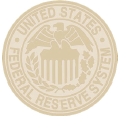Economy

Fed Beige Book: Tariffs Concern Manufacturers
Written by Tim Triplett
July 21, 2018
While manufacturers generally reported favorable business conditions all over the United States, companies in all the Federal Reserve Districts pointed to Trump administration tariffs as cause for concern, according to the Fed’s July 18 Beige Book report.
Economic activity continued to expand across the United States, with 10 of the 12 Federal Reserve Districts reporting moderate or modest growth. The outliers were the Dallas District, which reported strong growth driven in part by the energy sector, and the St. Louis District, where growth was described as slight. Manufacturers in all the Fed Districts expressed concern about tariffs and in many reported higher prices and supply disruptions that they attributed to the new trade policies. All Districts reported that labor markets were tight and many said their inability to find workers constrained growth. Contacts reported higher input prices and shrinking margins. Six Districts specifically mentioned trucking capacity as an issue and attributed it to a shortage of commercial drivers.
In the New York District, the Fed reported, manufacturers remained optimistic, on balance, but have become less so than earlier in the year. A number of manufacturing contacts remarked that tariffs have raised their costs. Moreover, uncertainty about future trade policy was cited as a major concern, particularly in parts of upstate New York, where there is substantial trade with Canada.
In the Philadelphia District, the makers of chemical products, paper products, fabricated metal products, and electronic equipment noted gains in new orders and shipments; the makers of lumber products, primary metals and industrial machinery reported mixed results. One machinery manufacturer noted that the effects of the steel tariffs have been chaotic to its supply chain–disrupting planned orders, increasing prices and prompting some panic buying.
In the Cleveland District, strong manufacturing demand showed no signs of letting up. One pump and motor manufacturer noted increased demand from customers in primary metals manufacturing and extractive industries. An industrial metals producer cited strong demand from the construction sector. Contacts remarked that concerns about future trade- and inflation-related price increases had prompted some customers to accelerate purchases. Most manufacturers expected that continued economic growth would lead to stronger customer demand in the near term. However, one auto-related manufacturer expected import tariffs to lead to weaker sales because of the consequent increase in prices.
In the Richmond District, manufacturing remained fairly strong. However, several manufacturers reported that while sales increased, profits dipped as price increases could not offset the rising costs of materials and transportation. Manufacturers also expressed concern about the potential adverse effects of rising trade tensions. One Maryland can manufacturer said he could not get the quality of steel needed domestically and anticipated losing business to foreign competitors who are not faced with steel tariffs.
In the Chicago district, manufacturing production increased at a moderate rate in late May and June. A number of contacts across manufacturing sectors reported operating at or near capacity. Steel production increased moderately in response to steady end-user demand and declining imports. One contact said that demand for domestic steel was the strongest it had been in 20 years.
In the Dallas District, expansion in the manufacturing sector continued, although the overall pace of growth eased in June from the highs seen in May. Output growth was led by transportation equipment and food manufacturing. Growth in machinery production receded in June from May’s elevated rates, while demand for fabricated and primary metals increased. Chemical production expanded further, and the Gulf Coast refinery utilization rate climbed up to 97.6 percent toward the end of June. Overall, outlooks among manufacturers remained positive, although contacts said that the new tariffs had heightened uncertainty in expectations for activity and prices, the Fed reported.

Tim Triplett
Read more from Tim TriplettLatest in Economy

Fed Beige Book: Economy improves, but manufacturing weak
While general economic conditions across the US improved slightly over the last six weeks, activity in the manufacturing sector was weak, according to the Fed’s latest Beige Book report.

SMU Community Chat: Simonson with the latest on construction
A lot of economists were predicting a recession last year. Ken Simonson, chief economist for The Associated General Contractors of America (AGC), wasn’t one of them.

Housing starts slip to seven-month low in March
Following a strong February, US housing starts eased through March to a seven-month low, according to the most recent data from the US Census Bureau.

Manufacturing activity in New York state continues to soften
New York state saw a continued decline in manufacturing activity in April, according to the latest Empire State Manufacturing Survey from the Federal Reserve Bank of New York

Worldsteel projects steel demand to grow 1.7% this year
Global steel demand will reach roughly 1.793 million metric tons (1.976 million short tons) this year, an increase of 1.7% over 2023, the World Steel Association (worldsteel) said in its updated Short Range Outlook report. The gain will come after a 0.5% contraction in steel demand in 2023. Demand is forecasted to increase another 1.2% […]
